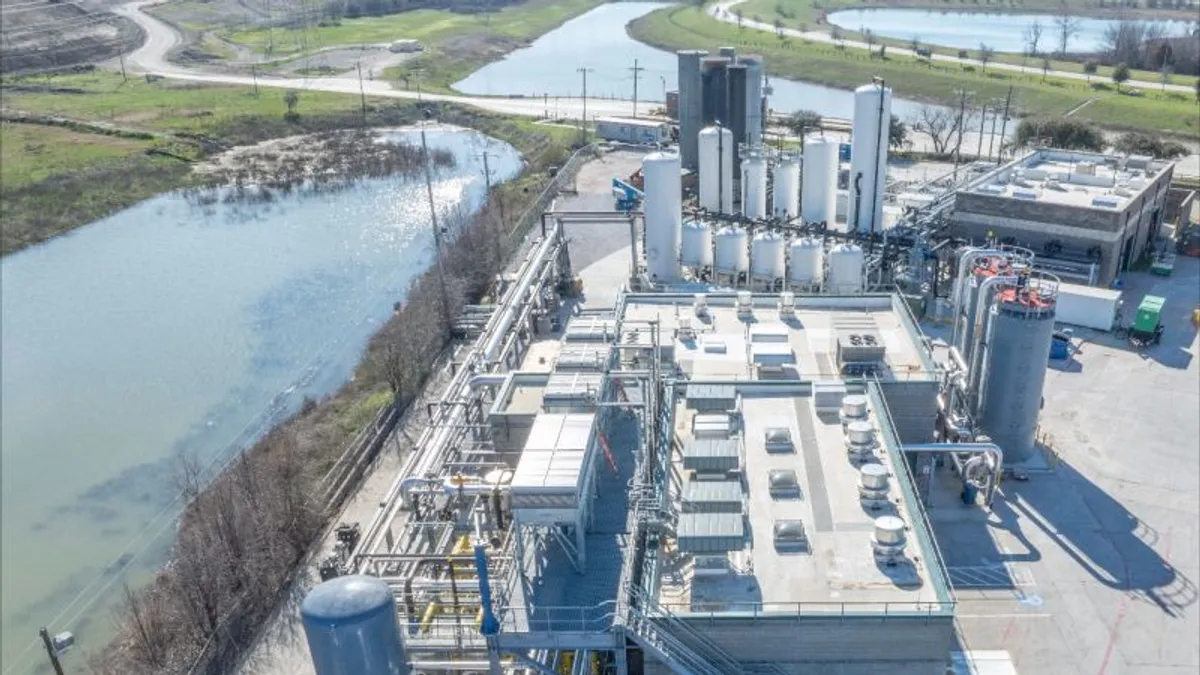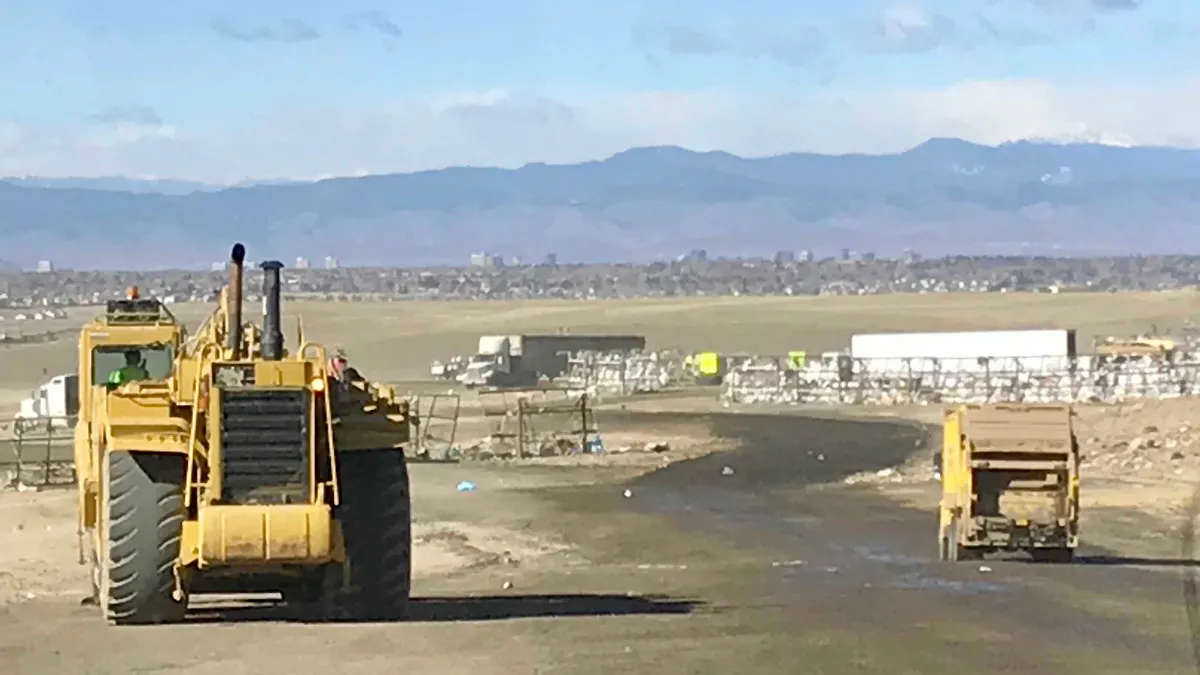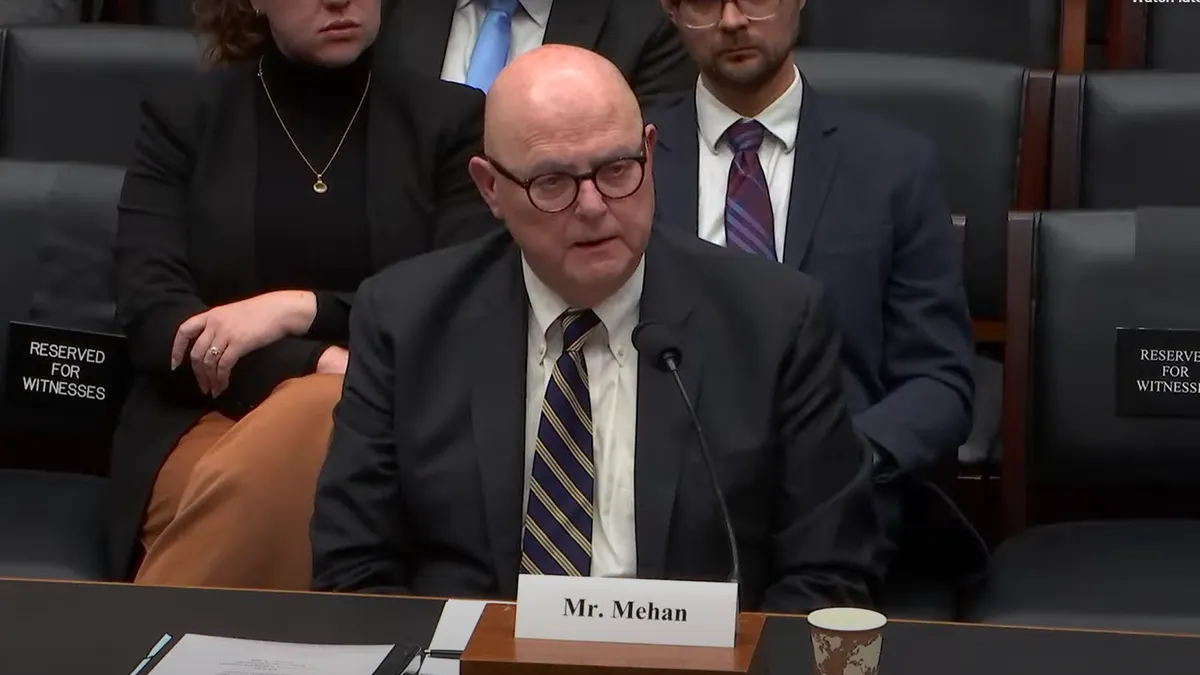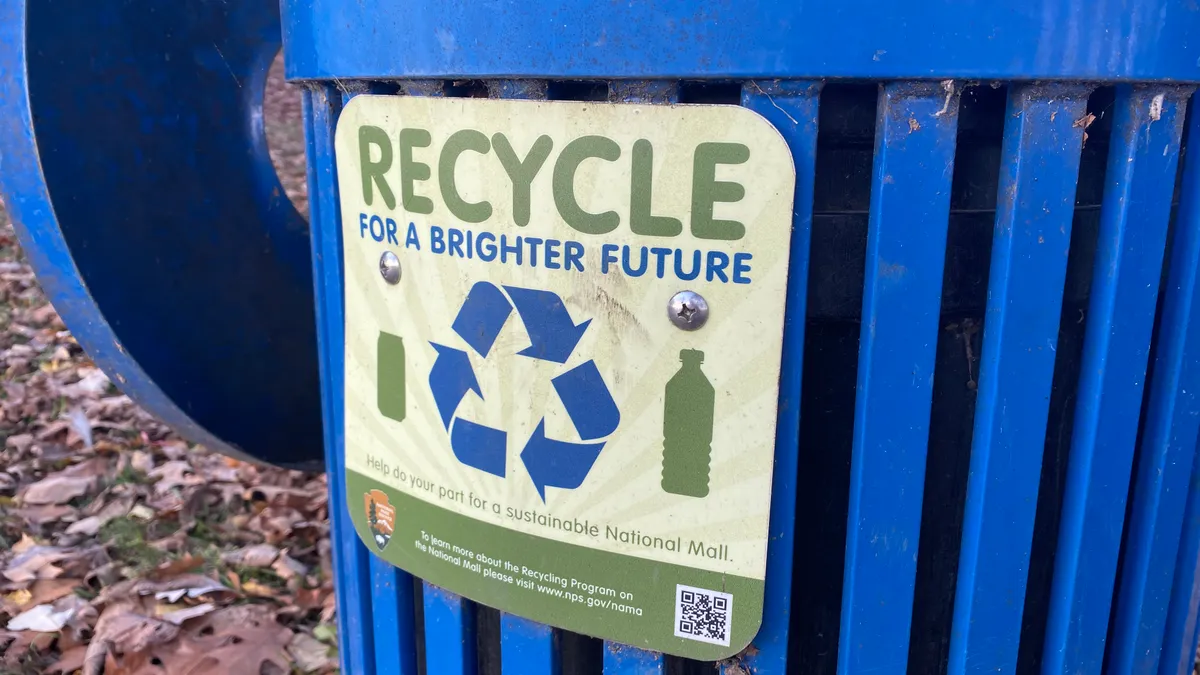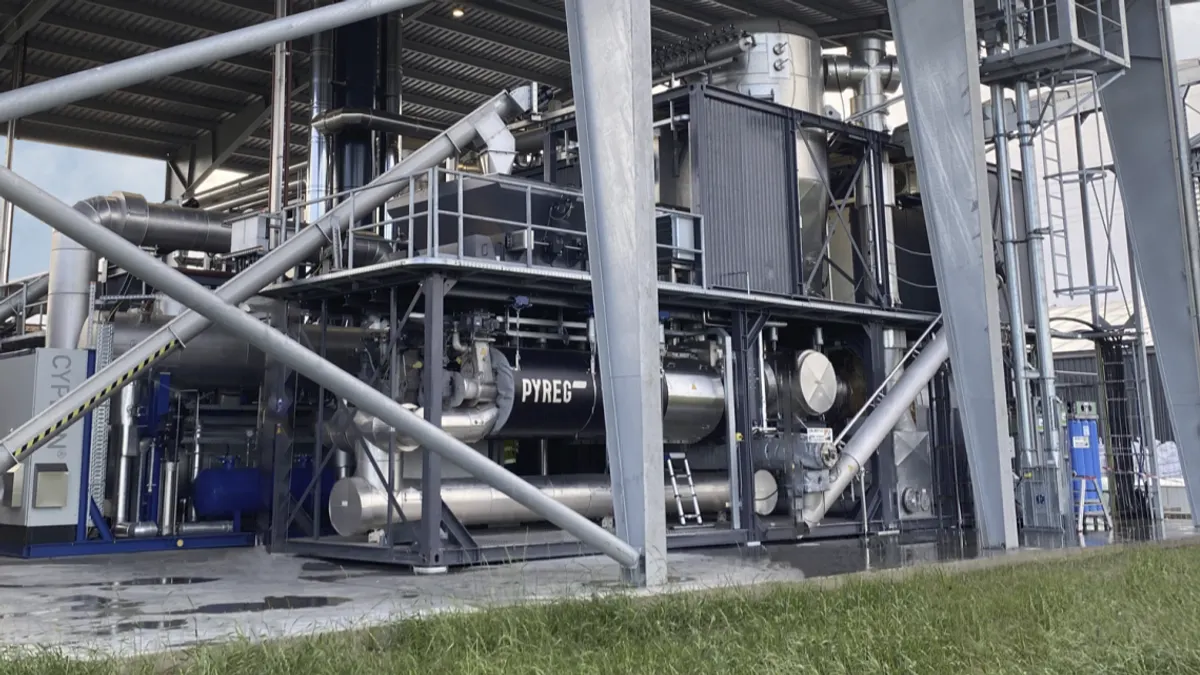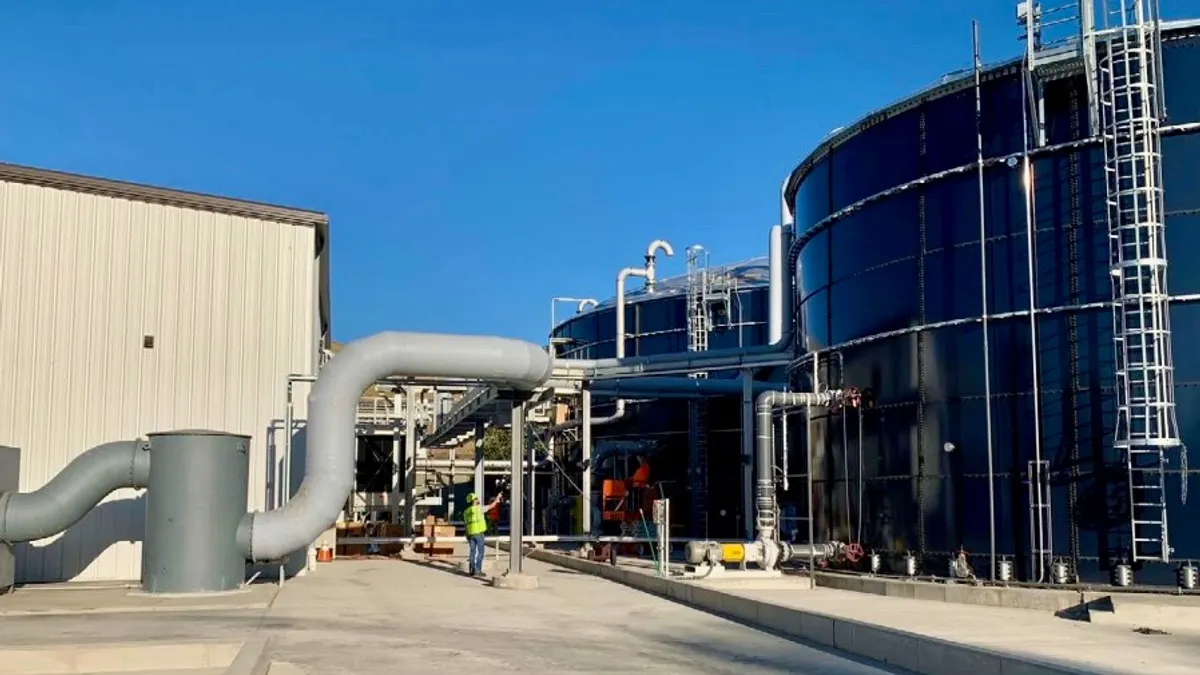WM opened a renewable natural gas facility this week in the Dallas-Fort Worth area, a region that the company says is becoming an important hub for its long-term energy plans.
The nearly $55 million facility, built at WM’s landfill in Lewisville, is expected to generate about 1.2 million MMBtu per year of RNG from landfill gas. It’s the company’s second RNG location in the area after the Skyline site in Ferris, Texas.
The plans are part of WM’s larger efforts to invest $1 billion and open about 20 total RNG sites through 2026. WM has already built three such locations. Four more sites are expected to open in 2024, including in Pennsylvania and Illinois.
WM Chief Sustainability Officer Tara Hemmer said the Dallas-Fort Worth region is ideal because it’s where some of the company’s large landfills are located, making it worthwhile to capture greater volumes of gas. WM has also been able to get permits quickly in the region, making it easier to connect into pipelines interconnected with electrical utilities.
Permitting obstacles are among the well-known hurdles in developing RNG projects across the country. Executives at the recent Biogas Americas conference in Georgia discussed the importance of building relationships with stakeholders to help smooth out the permitting process.
“Y’all should be educating the different utilities that you're working with, and trying to make sure that they understand the importance of these projects,” said Randy Beck, WM’s senior director of renewable energy, during a May 15 session at the event.
Houston-based WM already has an established presence in Texas. Hemmer said the state’s favorable regulatory and infrastructure environment is one of the reasons WM expects to build another three RNG plants there in the coming years.
As WM advances these plans, it’s looking ahead at how demand for RNG is evolving.
Hemmer said that WM generally uses an “80-40-20” plan where 80% of a facility’s offtake would be locked in via contracts during the first year of operation, 40% in the second year and 20% in the third year. That could involve offtake agreements in the voluntary market, such as with public utilities, pre-sold RINs or agreements with entities such as universities.
“We're seeing more parties come to the voluntary market really interested in the environmental attributes … this is a low-carbon fuel, and it's available today compared to other technologies that people may be tracking.”
Five years ago, WM’s main market was in transportation, which Hemmer said is still an important segment today. WM said the Lewisville facility will produce gas at a level equivalent to fueling 1,100 heavy-duty vehicles per day.
WM has about 12,000 CNG vehicles in its fleet, and it also owns about 200 CNG fueling stations. It aims to have between 14,000 and 15,000 CNG vehicles by the end of 2025, Beck said during the panel. The company plans to generate about 28 million MMBtu per year once all of its planned projects are built, which exceeds the amount it could dedicate to its fleet.
“We’re starting to pivot a little bit more to diversify our portfolio,” which includes looking at offtake agreements of varying lengths as well as offtake agreements overseas, said Beck. “That market is continuing to evolve, but we're pulling all those options into our portfolio.”
WM also has a long-term goal to collect more landfill gas, which Hemmer said is both a business driver and an effort to reduce greenhouse gas emissions. By the end of 2026, WM aims to “beneficially use” about 65% of its landfill gas, “but we want to be using more,” Hemmer said.
“We're going to look at what other opportunities we have beyond the [20 planned RNG facilities], either to build those out ourselves or build them out with a partner or find other uses for landfill gas,” she said.
WM, along with the rest of the biogas industry, is also “pretty closely tracking” the future of eRINs as part of the U.S. EPA’s Renewable Fuel Standards. “We're always optimistic there's huge demand for electricity, especially if you think about what's happening with generative AI and computing,” said Hemmer.
Beck said during the panel that WM is not currently considering opportunities such as sustainable aviation fuel or hydrogen facilities, “but we're happy to supply RNG as a feedstock for those.”
Hemmer said the company wouldn’t comment directly on a recent Reuters article, which cited anonymous sources, that said WM could be exploring the sale of certain RNG assets. WM has described the information in the story as a “rumor.”
“The growth of the business is important, but we're always looking for ways to maximize the value of our businesses, including our renewable energy business, and we'll look at any and all options,” said Hemmer.


